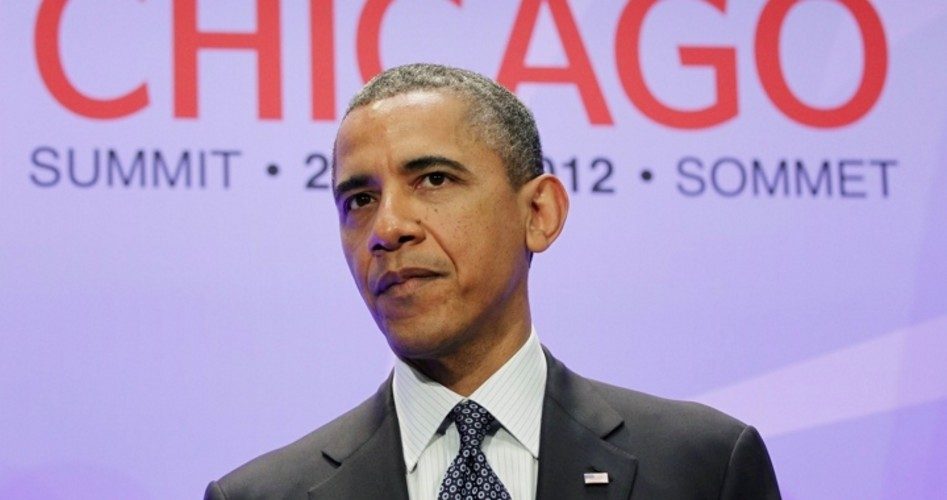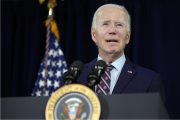
For most of the stories covering the recently concluded NATO summit in Chicago, the lead was that the war in Afghanistan will wrap up in 2014. After 11 years spending blood and money to run the Taliban out of office only to then invite them back to the bargaining table, America and NATO will pull out and leave the future in the hands of Afghans — mostly.
While the drawdown of forces from Afghanistan is certainly newsworthy, there was something in the dictum of the record of the summit that seems to have slipped past most media outlets, but in the long run probably merits more attention.
Although President Obama has indicated that he intends to “shift the focus” of American military alliances to Asia in an effort to keep China from running roughshod over its less-martially inclined neighbors, statements made by the hometown boy while in Chicago indicate he considers the strengthening of the European coalition to be high on the list of priorities.
What threat exists in Europe that would prompt the President to bolster NATO? The Asian gambit makes sense in that China is a legitimate threat to Asian military and economic stability, but there is no such obvious foe in Europe. Russia once played that pivotal role, but it has all but left the stage and there is no apparent understudy.
Perhaps, as some posit, it is the largely innumerable cache of nuclear weapons still sitting in the Russian arsenal that worries the President. He is concerned, it could be argued, that should those weapons fall under the control of the wrong strongman, America’s NATO partners could be targeted for nuclear destruction.
There is, as has been touted, the anti-nuclear shield protecting NATO, but even without that impediment to a Russian rogue, the United Kingdom and France both have the bomb and surely stand as deterrents.
Basically, it seems that in the post-Cold War world, NATO has been forced to find a reason to justify its continuing existence. As a high school student, this author once stood at a border patrol station watching a Russian soldier through binoculars as he watched me. My fellow students and I were taught about the Fulda Gap and how it was the most likely location for the imminent Soviet invasion of Europe.
Those days are gone and it is unlikely that American and European high school students are taught to fear the rising Red tide that was to have washed through the Fulda Gap. What, then, is the continuing mission for NATO?
NATO has adopted an “expand or die” mission statement. And, as any constitutionalist can testify, when one says NATO he actually means the United States, as reports indicate that the United States contributes between 20 and 25% of NATO’s operating budget. In fact, last February NATO Secretary General Anders Fogh Rasmussen said that over the past two years, “defense spending by NATO’s European member nations has shrunk by some 45 billion dollars” — the equivalent of Germany’s entire annual defense budget.
As has been reported, much of this treasure has been earmarked by American foreign policy for the defense of newly-initiated members of the Alliance, most of whom are from Eastern Europe; as well for the prosecution of armed conflicts in Bosnia, Kosovo, and Libya, with similar interventions in Syria being promoted by key members of Congress.
In examining this expansion of NATO and President Obama’s sponsorship of it, a key consideration is the fact that the NATO charter provides no authority for military engagements outside of the alliance. Article 8 of the North Atlantic Treaty signed on April 4, 1949, prohibits signees from entering into “any international engagement in conflict with this Treaty.” Articles 2 and 3 of the agreement restrict the use of armed force to the defense of the territorial integrity and “self-help and mutual aid” of the group. No provision is made for nation building or for serving the now ubiquitous “peace-keeping” missions that have become de rigueur for NATO.
While it isn’t specifically mentioned in the text of the North Atlantic Treaty that created NATO, the ostensible purpose of the coalition was to impede the march of the Red Army through Europe. Then again, perhaps this was the publicly promoted purpose while the true aim was the development of a regional bloc of governments whose function would facilitate the aggregation of all once sovereign nations into a global government under the flag of the United Nations.
Lest anyone doubt the spirit of the United Nations and globalism that animated the formation of NATO, read the following excerpts from the Treaty referencing the pre-existing responsibilities of members to the United Nations, including the subordination of NATO to the UN:
From the Preamble: The Parties to this Treaty reaffirm their faith in the purposes and principles of the Charter of the United Nations….
Article 1: The Parties undertake, as set forth in the Charter of the United Nations, to settle any international dispute in which they may be involved by peaceful means in such a manner that international peace and security and justice are not endangered, and to refrain in their international relations from the threat or use of force in any manner inconsistent with the purposes of the United Nations.
Article 5: The Parties agree that an armed attack against one or more of them in Europe or North America shall be considered an attack against them all and consequently they agree that, if such an armed attack occurs, each of them, in exercise of the right of individual or collective self-defence recognised by Article 51 of the Charter of the United Nations….
Any such armed attack and all measures taken as a result thereof shall immediately be reported to the Security Council. Such measures shall be terminated when the Security Council has taken the measures necessary to restore and maintain international peace and security.
Article 7: This Treaty does not affect, and shall not be interpreted as affecting in any way the rights and obligations under the Charter of the Parties which are members of the United Nations, or the primary responsibility of the Security Council for the maintenance of international peace and security.
Article 12: After the Treaty has been in force for ten years, or at any time thereafter, the Parties shall, if any of them so requests, consult together for the purpose of reviewing the Treaty, having regard for the factors then affecting peace and security in the North Atlantic area, including the development of universal as well as regional arrangements under the Charter of the United Nations for the maintenance of international peace and security. [Emphases added.]
As the foregoing samples prove, NATO was intended to be neither more nor less than the embryonic armed force of one of the departments of the shadow world government created by the Charter of the United Nations.
With one after the other European economy collapsing under the weight of taxes and welfare, there is little hope that the burden of financially supporting NATO will be lightened in the near future. In fact, as President Obama pushes for increased NATO involvement in combat missions outside of the Treaty’s territory, the United States is poised to follow its NATO colleagues off the fiscal precipice and to see generations of U.S. servicemen sacrificed on the crimson-stained altar of globalism.
Photo: President Barack Obama during his meeting with NATO Secretary General Anders Fogh Rasmussen, not shown, at the NATO Summit in Chicago, May 20, 2012: AP Images


